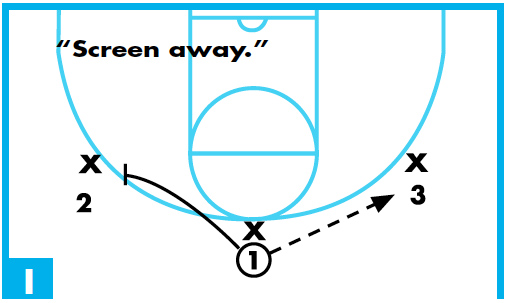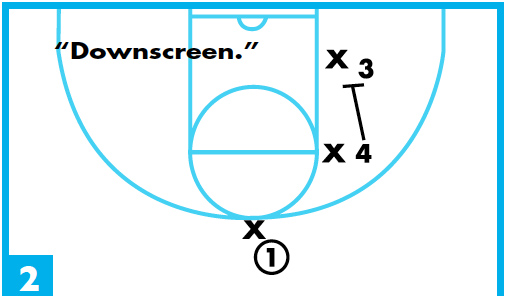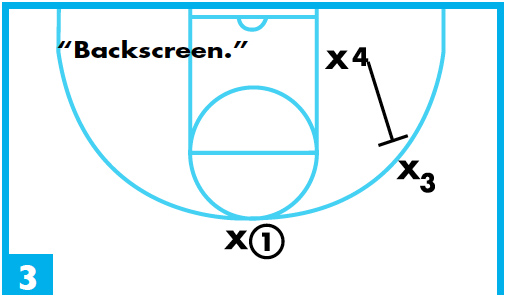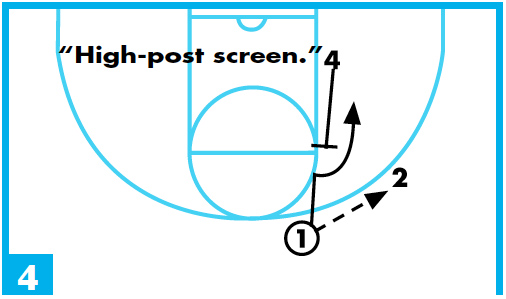Offensive fundamentals to guide teams to a title
Simple tips to free shooters and create more scoring opportunities

It seems like not that long ago when our team won the Massachusetts Division I state championship. While we were a talented team that played hard, our winning formula was dependent upon our rock-solid offensive fundamentals. With solid offensive fundamentals, you’ll reduce errors, cut down on turnovers and execute your offense more efficiently.
Bob Foley, the former women’s coach at Providence College, used to say, “Don’t teach plays, teach players how to play.” With Foley’s philosophy in mind, 2-on-2 and 3-on-3 basketball becomes a critically important part of learning to play the 5-on-5 team game.
Getting open
Players should learn various ways to free themselves up to receive the ball. To break things down for players, we start with the concept of “getting open.”
There are two concepts that are critical for successfully getting open on a consistent basis:
- Changing speeds. Developing an ability to suddenly and unexpectedly change speeds.
- Get close to get open. Using the “get-close-to-get-open” method for shaking free of a defender.
When players run at the same speed all the time, they become easier to defend. But if a player walks toward a defender, gets close and “tight” to them and then — with a sudden burst of explosive speed — cuts out to the wing, he or she will invariably lose the defender and get open for a period of time.
Using these cutting techniques, you can run almost anything in your offense.
Utilizing this concept effectively depends on the offensive player’s ability to cut. We teach a variety of cuts including the V-cut, L-cut, inside pivot and backdoor cut. Once a player has received the pass, they should square-up to the basket and be in a technically sound triple-threat position.
Screening
Once a player has freed themselves to receive a pass, the next step is to protect the ball and wait for a screen to develop.
There are four techniques for coming off screens. Use of these techniques is dependent upon a player’s ability to read what the defense is doing. If players start to read and react to the defense instead of just breaking out to the wing every time, they’ll be much more effective offensively in the long run.
» ALSO SEE: A simple, man-to-man offense that drives defenses crazy
The four methods for coming off screens include:
- V-cut. When the defender goes behind the screen, the cutter fakes low, rubs off the screener’s shoulder and moves out toward the ball.
- Curl cut. When the defender fights over the screen, the cutter fakes low, rubs off the screener’s shoulder and curls toward the basket.
- Backdoor cut. When the defender steps over the screen, the cutter fakes high, rubs off the screener’s low-side shoulder and makes a cut to the basket.
- Fade. When the defender jumps behind screen, the cutter runs directly toward the screen, then falls back a few steps and calls for the ball.
Using these cutting techniques, you can run almost anything in your offense. The following plays show how these screen-and-cut methods work utilizing screens from different angles and from various spots on the court.
Screen-away play
 A basic screen-away play is a common technique in many offensive systems. In this play, the point guard passes to a wing and screens for the the opposite wing player (assuming that the offense is set up in a wingpoint-wing formation on top).
A basic screen-away play is a common technique in many offensive systems. In this play, the point guard passes to a wing and screens for the the opposite wing player (assuming that the offense is set up in a wingpoint-wing formation on top).
DIAGRAM 1: Screen away. 1 passes to 3 and screens for 2. 2 reads the defense and reacts with a V-cut, curl cut, fade or backdoor cut. You can also work the quick give-and-go on the point-to-wing pass. Make sure the point guard jabs away and then cuts in front of the defender.
Downscreen
 You can set up a play with a post player and have a wing player break toward the post and set a downscreen.
You can set up a play with a post player and have a wing player break toward the post and set a downscreen.
DIAGRAM 2: Downscreen. We start the forwards high and have them screen down and open to the ball. This technique often creates a mismatch.
It’s critical that the guards read the defense and react accordingly. While 1 has the ball on top, 4 breaks to the post and sets a downscreen for 3. 3 uses any combination of the aforementioned cuts to get open. 4 opens to the ball after setting the screen and tries to post up.Backscreen
 Another good option may be a backscreen, where the post player breaks out to set a backscreen for the wing.
Another good option may be a backscreen, where the post player breaks out to set a backscreen for the wing.
DIAGRAM 3: Backscreen. 4 comes out from the low block and sets a backscreen for 3. 3 reads the defense and can fade or make the cut either in front or behind the screen.
High-post screen
Another effective play is for the low post player to break to the high post and set a screen for the ball handler.
 DIAGRAM 4: High-post screen. 1 passes to 2 on the wing. 4 breaks up from the low block and sets a screens at high post for the 1. 1 uses the screen and breaks to the basket (UCLA cut). 2 looks to quickly hit 1 on the cut to the basket. If the defenders both sag on 1, then 2 can feed 4 in the high post (at the ball-side elbow).
DIAGRAM 4: High-post screen. 1 passes to 2 on the wing. 4 breaks up from the low block and sets a screens at high post for the 1. 1 uses the screen and breaks to the basket (UCLA cut). 2 looks to quickly hit 1 on the cut to the basket. If the defenders both sag on 1, then 2 can feed 4 in the high post (at the ball-side elbow).
2-low stack
All of the options you get from a screen down, you can also get from the 2-low stack. To make this set effective, 3 and 4 must read the defense and work in tandem to react accordingly.
DIAGRAM 5: Stack.
Double-low
 DIAGRAM 6: Double-low. One post player screens away for the other. Remind the players that the screener should always “open to the ball” almost all the time on a good screen, if the screener is open, and that’s a big if, they open to the ball. (like a pick-and-roll. The screener should open “belly to the ball.”)
DIAGRAM 6: Double-low. One post player screens away for the other. Remind the players that the screener should always “open to the ball” almost all the time on a good screen, if the screener is open, and that’s a big if, they open to the ball. (like a pick-and-roll. The screener should open “belly to the ball.”)
Jeff Hoyle is the former girls basketball coach at Dartmouth High School in Massachusetts.









